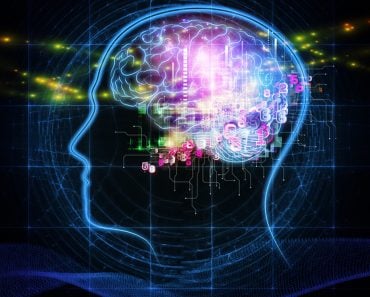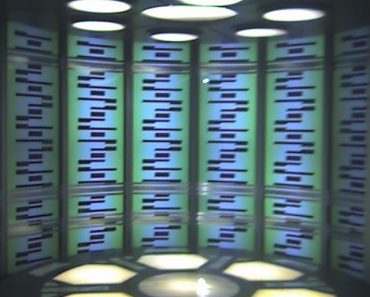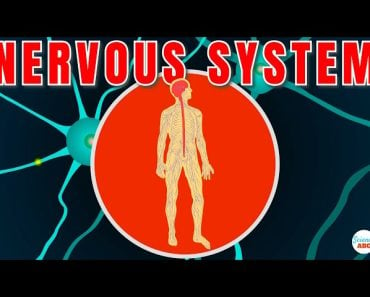Like we’ve seen in the Avatar movies, real-world brain-interface technology has enabled users to control machines (e.g., moving a robotic arm) by using their thoughts alone. Even so, there is currently no technology capable of performing mind-transfer or a ‘mind upload’. We are nowhere near developing the ability to transfer a person’s consciousness into another body.
Avatar: The Way of the Water, sequel to the 2009 sci-fi adventure Avatar, has become one of the highest grossing films of all time.
One of the key features that both movies rely on and that wowed audiences was the concept of mind transfer technology. Thanks to this awesome innovation, a war-paralyzed, wheelchair-bound ex-marine was able to turn into a 10-foot blue-skinned human-alien hybrid ‘avatar’. He was able to tame dragon-like alien beasts and lead a full-scale aerial battle.
While both movies are stunning works of fiction, the question remains… how grounded in reality are they? How close are we to achieving a technology that can transfer the mind/consciousness from one body to another, the way we transfer data between two devices? Wouldn’t that be a way to let our minds live forever?
Considering how neck-deep we are in computers here on Earth, it’s hard not to wonder if it’s real—or if it will be anytime soon.
Let’s find out!

Recommended Video for you:
How Does The Mind Transfer Work In Avatar?
In the movie, humans seeks to explore the moon of Pandora (located in the real star system of Alpha Centauri) to get unobtainium, a very rare mineral that is only available in this fictional world. However, the air on this planet is toxic for humans and deadly predators lurk in every corner. That’s how the need arose for porting human consciousness into a Na’vi (indigenous people of Pandora) body.
In reality, we have seen astronauts sending and remote-controlling landers and rovers to explore Mars and other destinations. In the movie Avatar, humans launch similar remote control operations. Instead of robots, however, they have their avatars.
First, these avatars are created by mixing human DNA and the genetic material of Na’vi aliens. Humans (the “controllers”) are then mind-linked to their fully mature avatar bodies. At that point, they can control their avatars wirelessly using only their thoughts. The whole process happens through a super-high-tech brain-computer interface (BCI) that works on neural signals. In the first movie, we also saw the Na’vi performing a ritual to permanently transfer Jake’s consciousness into his avatar body.
So, how much science is there in this concept?

Brain-Computer Interfaces Are Already In Development
It is already possible to connect human brains to a machine and allow the machine to measure the activity of the brain and interact with it. Electroencephalography (EEG) is used to detect changes in brain activity. MRI or fMRI can also help us look at the structure and functions of the brain.
Brain-computer interface (BCI) is a real scientific invention that has allowed people to control devices or machines using only their thoughts. Research shows that it could help people with paralysis (like Jake Sully) walk again.
For example, a user would just have to imagine moving their limbs. This would drive a robot limb (attached to his or her body) to move in the desired way. Scientists have also used this technology to convert mental handwriting into actual text on screen.
Furthermore, doctors are performing telepresence surgeries from remote locations. While operating, they would still feel as if their hands were actually inside the patient’s body.

Now, reading electrical signals and biochemical changes in the brain is one thing, but transferring the whole thing to a different place is quite another.
Mind-upload Technologies On The Horizon?
Research on brains and consciousness shows that it is theoretically possible to transfer ‘consciousness’ to a machine. There are no laws of physics that clash with this vision.
Then again, human consciousness itself is a matter that remains hard to pin down. The human brain, being an active biological organ, doesn’t operate like digital computers. Unlike machines, it’s alive.
Our brain does not passively follow instructions by accepting binary data (in zeroes and ones) as inputs and then processing it, as computers do. Our consciousness (the ability to think, sense, feel, reflect on our existence) is what makes us different from a machine.
Consciousness cannot be reduced to a process in the brain or a neural activity, at least not one that anyone has identified. We are conscious because we have unique thoughts, memories, feelings, emotions and a personality. All our rich and complex subjective experiences combine into an infinite amount of data.
The real hurdle is that scientists can’t figure out what consciousness truly is. It is impossible to transfer something when we don’t even know what it is.
A Final Word
Uploading or preserving your consciousness, then, isn’t something that is easy to achieve, by any means. Scientists have not found a way to transfer human minds into machines, let alone another biological brain.
Sorry, folks… as of now, getting your mind transferred into a Na’vi body is simply impossible!
References (click to expand)
- The Big Questions | The Search For Life – Exoplanet Exploration. Tration
- Astronauts Remotely Control Rover From Space - NASA. Tration
- Electroencephalogram (EEG) - NHS. National Health Service
- Drew, L. (2022, April 20). The brain-reading devices helping paralysed people to move, talk and touch. Nature. Springer Science and Business Media LLC.
- Software turns 'mental handwriting' into on-screen words .... Stanford University School of Medicine
- Telepresence - an overview | ScienceDirect Topics. ScienceDirect












